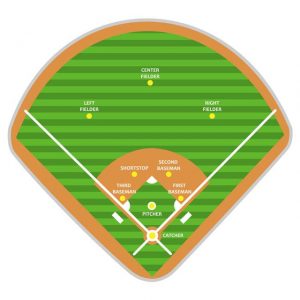Introduction
Quick Navigation
All softball enthusiasts or lovers around the globe should be very familiar with the origin of the game; as a softball player or enthusiast and do not know the full history of softball, you must know this softball and baseball both come from the same origin. The softball game originated from baseball; however, one will automatically think both games are the same, with both coming from the same origin. However, it is not so, although both are very similar in terms of how it is played and the materials and equipment used in playing both games still they both have their differences.
Although these differences may not be pronounced but there, one of the game’s differences includes the ball used in playing the softball game and the ball used in playing baseball; that of softball is a bit larger than that used in the playing of baseball. Also, the bat used in playing both games might look similar, but there are some distinctive features in each bat’s weight and each bat’s length. The length of a softball bat tends to be longer than that of baseball, although it might be longer but with only a couple of inches, making it less noticeable to spectators.
Know more softball catcher glove size: here
Both softball and baseball are very similar games even in the governing of both games, the similarities are still very much evident, for example in baseball, the weight of the bat a player uses in playing the game is determined by the age of the player and the league in which such player is playing. This rule is also applicable when softball is involved.
Another important factor guiding the game of softball and has also contributed to the growth of the game immensely is the rules and regulation guiding the game in terms of the equipment used and the general rules of the game; unlike the inception of the game whereby most players use the bat as it suits them in terms of weight, shape, and size now all this has been regulated which has made the game of softball more tasking and more interesting thereby attracting followers and enthusiast from all over the world.
This article is based on the rules and regulation guiding the game; however, these rules and regulations will be narrowed down to only the softball infield flying rule to help our audience better understand the rules guiding the game if those rules are picked and are explained in a detailed manner one after the other.
Moving on to the next section of the article, This segment of the article will be based on the softball infield fly rule
Checkout top college softball blogs: here
Softball infield fly rule
In this segment, our audience will understand the softball infield fly rule, but before we get there, we have to discuss what a fly rule is and why we have it in softball. In softball, the infield fly rule can be very tricky to hear even for advanced players in the game, as it leaves most players confused on what exactly to do in most cases. Understanding this rule is very easy once you possess the knowledge on the basic and other rules that govern the game; however, to fully understand this rule, one must be familiar with the term double play.
What is the infield fly rule?
When talking about an infield fly rule, it is a rule that allows fair fly ball which, in the umpires, judgment can be caught by infielder, pitcher or the catcher with no extraordinary effort on their path and when runners on first, second, and third runs are involved with less than two outs. For an umpire to call this rule, the infield fly, or when the umpire calls the infield fly rule, the batter must be out whether the ball is caught or dropped. In this play, the ball is live, runners on base may move forward; however, it will be at their own risk if they did not catch the ball or tag up and advance in the case of a catch.
Checkout how to clean a softball bat: here
Why does it exist? This question always arises from an amateur in the game; the reason this rule exists is that the infield fly rule helps prevent a case of double or triple plays of popups. The infield fly rule is essential because runners will be in a dilemma without it. This rule applies because in the case of multiple runners on base, a popup missed will only result in a force out.
What does this rule mean for a player
Another question that always pops up with this rule, most especially when discussing with amateurs or enthusiasts who don’t know much about the game, always pops up. However, to answer this question, when a player hears the umpire calls the infield fly rule, the player does not have to run for the ball if it drops. Once the infield fly rule is called as a player, you should stay close to your coach, who will most likely send you if the ball is missed, and in this case, you will be in a safe position to go for the ball however you have to be prepared to slide because it will only end in tag play once this happens.)
Know more about softballs: here
Other things to consider about the infield fly?
When the umpire calls this rule, it does not necessarily mean that the ball has to be caught or should be caught by an infield player. The amazing thing is that an infield ball does not need to be caught in the infield area at all. You should also know when an infield ball is caught; the batter is out already.
Conclusion
The infield fly rule was introduced to help reduce the dilemma faced by runners in a softball game. An infield fly is a rule that an umpire can only call in the game; as a softball player, you should familiarize yourself well as it can be very tricky once it is called.

